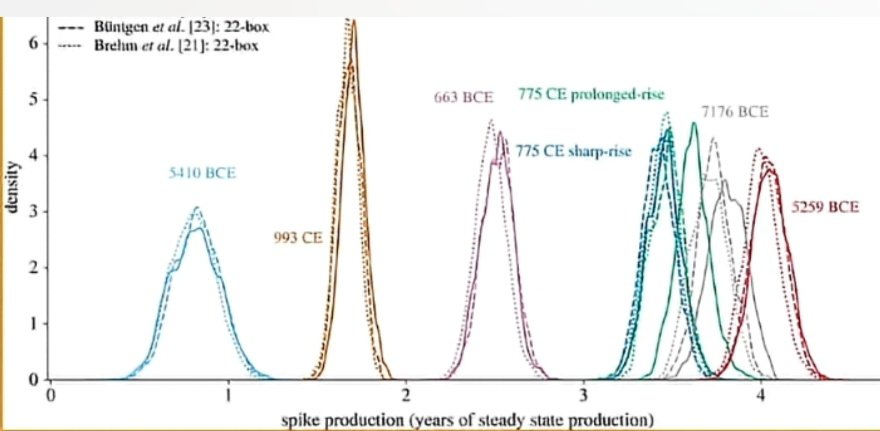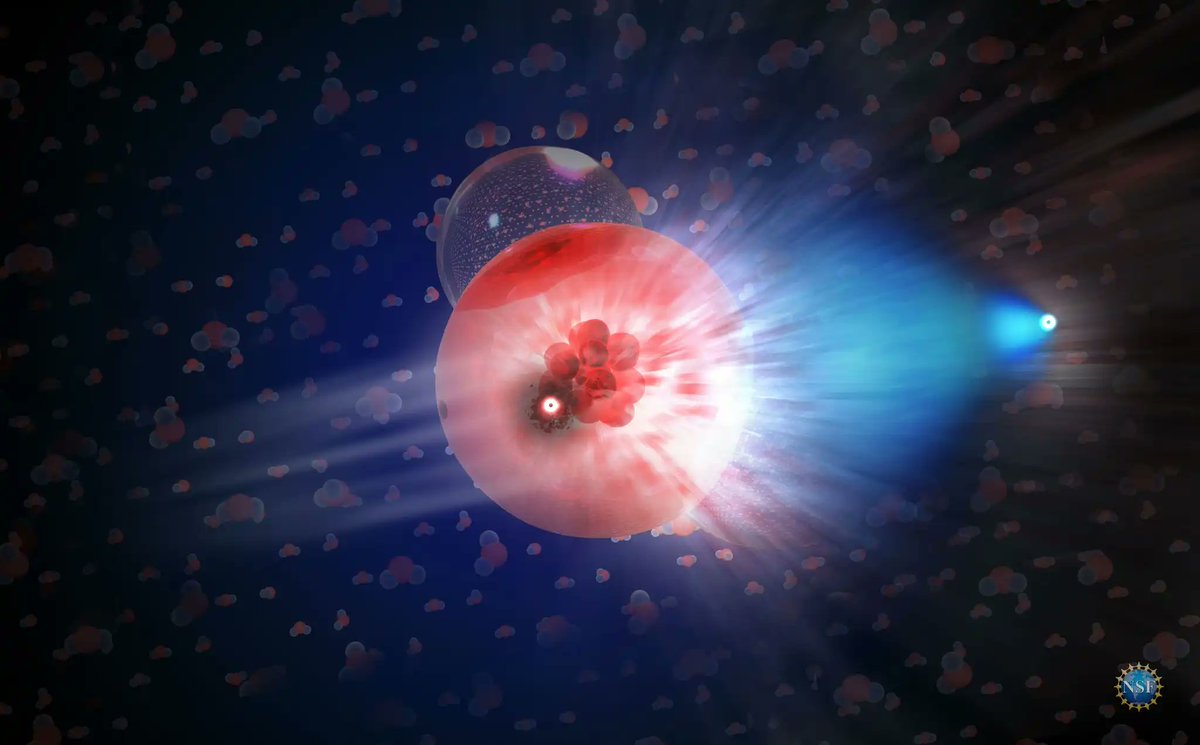About 1300 years ago, an unexplained cosmic storm hit our planet. It left its imprints in the tree rings across the globe and the ice cores of Antarctica. Then, after 200 years, the event repeated, but this time it was 60% as strong. 1/
#Thread #SpaceWeather
#Thread #SpaceWeather
When scientists analyzed them in detail, they found that six such cosmic storms have struck our planet over the past few thousand years. Today, these are known as the Miyake events. 2/
Miyake events are not linked to regular solar storms that hit our planet. They are much more powerful, and their origin remains a mystery. Studies show that such an event happens, on average about once every thousand years. 3/
If a Miyake event occurs today, it would be catastrophic. It would have a devastating impact on modern technology, including satellites, Internet cables, and even long distance power lines and transformers. 4/
But the most critical question is how do we know such an event happened in the past? What imprints had the Miyake events left on our planet?. Finally, and most importantly, what is the origin of the mysterious cosmic storm that seems to hit the Earth periodically? 5/
The answer to the mystery lies in tree rings. That may sound weird at first, but let's look at what happens during cosmic radiation bombardment. When a large flux of high energy radiation slams into the Earth's atmosphere, it changes its chemical composition. 6/
Specifically, when charged cosmic particles interact with abundant nitrogen atoms in the atmosphere, they can convert them into an isotope of carbon. Radiocarbon 14 filters through the air, oceans, plants, and animals. 7/
This way it can produce an annual record of radiation in tree rings. Compared to naturally occurring carbon isotopes on Earth, radiocarbon is scarce. It forms only in the upper atmosphere when cosmic rays collide with nitrogen atoms, triggering a nuclear reaction. 8/
Trees are known to add a new growth ring annually. This means if we can connect the spikes in the quantity of radiocarbon with the growth rings in trees, it can pave the way to obtain a reliable record of radiation storms that might have impacted Earth thousands of years ago. 9/
In 2012, Japanese physicist F Miyake found something strange. She discovered a sudden single year jump in radiocarbon concentration around 774 CE in Japanese cedar rings. Then in 2013, another spike was noted in rings from 993 CE. 10/
Over the years, a sharp increase in radiocarbon levels has been found, accounting for six well studied and well accepted radiocarbon spikes. These events of a surge in carbon 14 production are known as the Miyake events. 11/
Many cosmic events can lead to these spikes. Since the Sun is the most dynamic celestial body in our neighborhood, solar flares may seem to be an obvious reason. Solar flares are the most explosive events occurring in the SS. They can be seen as bright spots on the sun. 12/
The flares represent an intense burst of radiation from the release of magnetic energy associated with sunspots. When the team used computer models to analyze tree ring data on the 6 known Miyake events, the results challenge the idea that solar flares are linked to these spikes.
The team modeled the global carbon cycle to reconstruct the process over 10,000 years. In their paper, they produced detailed curves that could shed light on the relationship between the long ... 14/
👉 royalsocietypublishing.org/doi/10.1098/rs…
👉 royalsocietypublishing.org/doi/10.1098/rs…
... suspected astrophysical influence of the solar activity cycle on modulating radiocarbon production in Earth's atm. For example, in this graph, the area under each curve shows the density of radiocarbon for all the six known Miyake events, ... 15/ 

.. and this curve shows the duration of each event.
It provided them with sufficient data to check if the carbon spike timing is linked with solar flares among the six known events. 16/
It provided them with sufficient data to check if the carbon spike timing is linked with solar flares among the six known events. 16/

More data is available for the events of 774 and 993 CE. They seem globally coherent with evidence. In many trees in both the northern and southern hemispheres. The event of the year 774 is even more prominent, with the most available ring data. 17/
It appears to be more than 10 times as powerful as the Carrington Event of 1859. The Carrington Event was a powerful geomagnetic storm that caused Telegraph lines to burst into flames. It even led to planet wide auroras. 18/
The Carrington Event remains the most intense geomagnetic storm to date in recorded history. It occurred just a few months before the maxima of solar cycle 10. So as the sun approaches the peak activity of its current solar cycle in July of 2025, geomagnetic storms can ... 19/
... become more frequent.
After analyzing the data for the event of 774, the team noted some inconsistencies. Although a fraction of trees in some parts of the world showed a sharp spike in radiocarbon for 1 year, the others displayed a delayed spike across two to three years.
After analyzing the data for the event of 774, the team noted some inconsistencies. Although a fraction of trees in some parts of the world showed a sharp spike in radiocarbon for 1 year, the others displayed a delayed spike across two to three years.
So the team concluded that instead of a single instantaneous explosion or flare, there might have been several small outbursts that caused a single Miyake event. The cause could be a supernova explosion. 21/
Astronomers have long speculated that a supernova may have been seen in 774 CE. This motivated them to look for more links between the radiocarbon spike and supernova explosions. However, it's not straightforward. 22/
We have found supernovas with no radiation spikes and spikes with no length supernova. Further, some events might be related to super flares from M dwarf stars, but unfortunately there still doesn't exist a simple explanation that can neatly explain the Miyake events. 23/
Based on previous records, a Miyake event may reoccur sooner or later. The problem is that a lot has changed since the last event. If a Miyake event equivalent to the one in the year 774 occurs now, it will lead to an internet apocalypse. 24/
In addition, infrastucture might get damaged and air travelers will be exposed to lethal radiation levels.
That's why it's essential to understand the nature of Miyake events and the exact physical phenomenon that causes them. 25/25
That's why it's essential to understand the nature of Miyake events and the exact physical phenomenon that causes them. 25/25
*Note*
1/ This post has NOTHING to do with the recent activity of the Sun. It is just one of many posts I write.
2/ They are likely related to super-flares discovered on solar-like stars, but the exact cause remains unclear.
26/26
1/ This post has NOTHING to do with the recent activity of the Sun. It is just one of many posts I write.
2/ They are likely related to super-flares discovered on solar-like stars, but the exact cause remains unclear.
26/26
• • •
Missing some Tweet in this thread? You can try to
force a refresh









